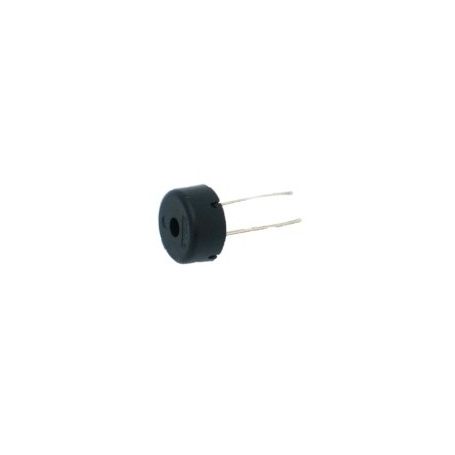Piezo buzzer
Piezoelectric buzzer, ideal to produce tones, beep and alert songs
Payments are secured by LyraCollect, a French payment collection company.
It is possible to delivered to your home, to a pick-up point or picked up by appointment at MCHobby
We prepare, pack and ship your orders with great respect and care.
Play tones and music notes with Piezo Buzzer
The piezoelectric buzzers are used to make beeps, tones, songs and alert. This model is small but incredibly noisy! You can control it with a voltage from 3V to 30V and square waves (like PWM signal).
To use it, connect a pin to ground (GND) and on a pin of the microcontroller producing a square wave using a timer or PWM.
To get the loudest tones, it is better to produce de tones around 4KHz but this buzzer works very well between 2KHz and 10KHz.
To produce even more noise, you can connect the two pins of the piezo on a microcontroller and reverse the output (high or low), this method called "differential drive" allows to double the sound volume.
Technical details
- Diameter: 12.2mm
- Height: 6.53mm
- Spacing: 5mm
- Weight: 0.70g
- Model: PS1240P02BT
- Input voltage: 3V
- Max input voltage: 30V
- Technical data sheet
Tutorial
- For Arduino, you can follow the music circuit of the ARDX (Wiki, French).
- Arduino.CC has an example page dedicated to Tone (including the mounting).
You can safely replace the speaker and its resistance by the piezo buzzer. - Using the buzzer with Flora (AdaFruit, English)
- The net is full of examples.





